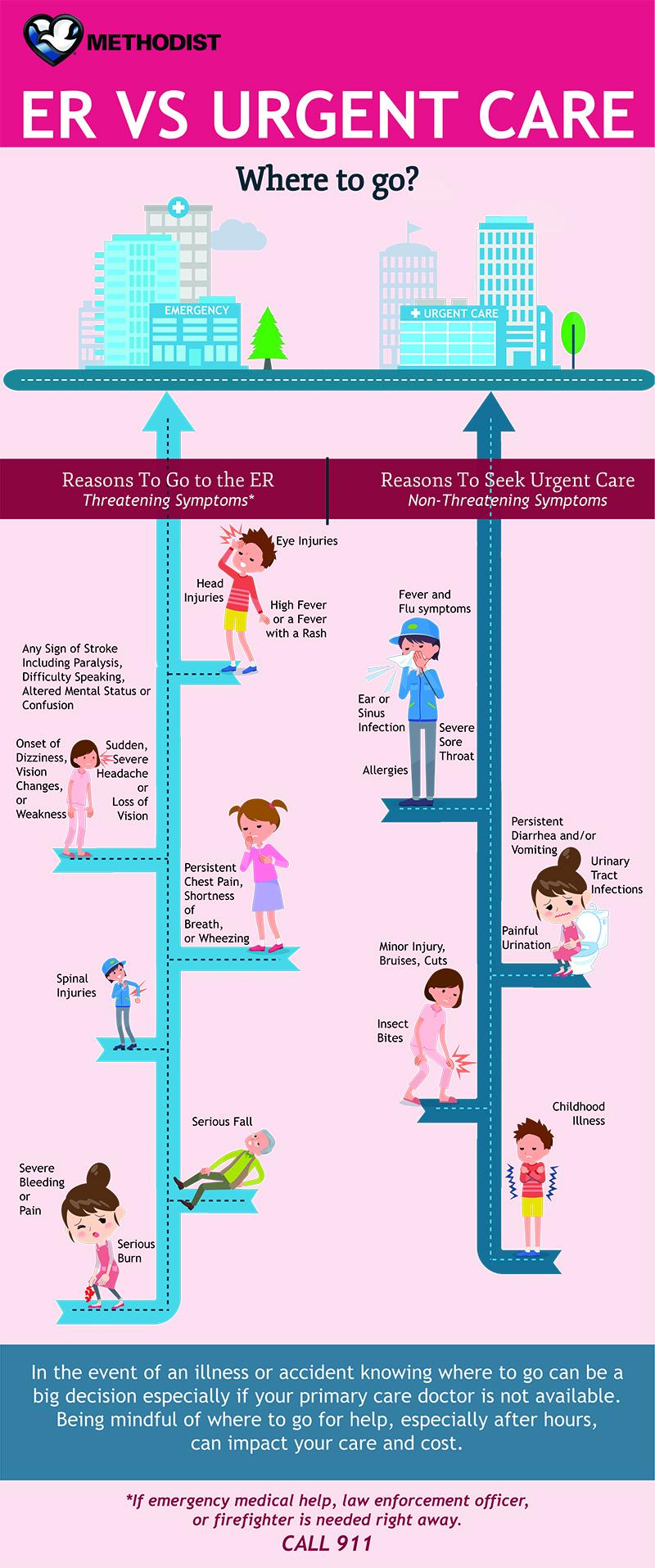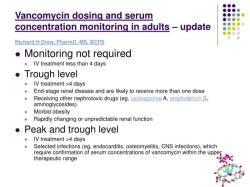Do I use urgent care or emergency room?
Choosing between urgent care and the emergency room depends on the severity of your medical condition. Here are some general guidelines to help you decide:
Urgent Care:Urgent care centers are suitable for non-life-threatening conditions that require prompt attention but are not emergencies. Examples of conditions that can be addressed at urgent care include:
Minor Injuries:
- Cuts and lacerations requiring stitches.
- Minor fractures or sprains.
Illnesses:
- Cold and flu symptoms.
- Minor infections.
- Mild allergic reactions.
Routine Medical Services:
- Vaccinations.
- Physical exams.
- Prescription refills.
Diagnostic Services:
- X-rays.
- Basic lab tests.
Emergency Room:The emergency room is designed to handle serious and potentially life-threatening conditions. You should go to the emergency room for:
Serious Injuries:
- Severe fractures.
- Head injuries.
- Deep wounds.
- Injuries from accidents or falls.
Life-Threatening Conditions:
- Chest pain or pressure.
- Difficulty breathing.
- Signs of a heart attack or stroke.
- Severe allergic reactions.
Medical Emergencies:
- Uncontrolled bleeding.
- Sudden, severe pain.
- Loss of consciousness.
- Seizures.
Complex Diagnostic Tests:
- Advanced imaging (MRI, CT scans).
- Specialized laboratory tests.
Factors to Consider:
Severity of the Condition:
- If the condition is life-threatening or severe, go to the emergency room. If it's a non-life-threatening issue that requires prompt attention, urgent care may be more appropriate.
Time of Day:
- Urgent care centers often have extended hours and may be open on weekends. If your regular doctor is not available, urgent care may be a convenient option. Emergency rooms are open 24/7.
Cost:
- Emergency room visits are generally more expensive than urgent care visits. If your condition is not an emergency, choosing urgent care can be more cost-effective.
Insurance Coverage:
- Check your insurance coverage and understand which facilities are in-network. In some cases, insurance may not cover non-emergency visits to the emergency room.
If you are unsure about where to go, you can call your primary care doctor or your insurance provider's hotline for guidance. In emergencies, always prioritize seeking immediate medical attention.
Health dilemma: Do I use urgent care or emergency room?
When faced with an unexpected illness or injury, making the right decision about where to seek medical care can seem daunting. Urgent care centers and emergency rooms (ERs) both provide healthcare services, but they differ in their capabilities and intended purposes. Understanding the distinction between these two options is crucial for ensuring you receive the most appropriate care for your condition.
Urgency assessment: Differentiating between urgent care and emergency situations.
Urgent care centers handle non-life-threatening but time-sensitive medical issues that require immediate attention but can wait for a few hours. Examples of urgent care cases include:
Minor injuries: Sprains, strains, cuts, and minor burns
Illnesses: Fever, flu, sore throat, earaches, and urinary tract infections
Acute exacerbations of chronic conditions: Asthma attacks, diabetic episodes, and minor allergic reactions
In contrast, emergency rooms are equipped to handle life-threatening or critical medical emergencies that require immediate intervention. Examples of ER cases include:
Severe injuries: Broken bones, deep cuts, head injuries, and significant burns
Life-threatening illnesses: Heart attacks, strokes, seizures, severe bleeding, and severe allergic reactions
Sudden loss of consciousness or severe pain
Service distinctions: Understanding the capabilities of urgent care and emergency rooms.
Urgent care centers provide a range of services to address non-emergency medical needs. These services typically include:
Primary care services: Physical exams, vaccinations, and treatment for minor illnesses and injuries
Diagnostic services: X-rays, ultrasounds, and other diagnostic tests
Laboratory tests: Blood and urine tests to diagnose infections or other medical conditions
Wound care: Cleaning, dressing, and suturing of minor wounds
Medication prescriptions: Providing prescriptions for antibiotics, pain relievers, and other medications
Emergency rooms, on the other hand, are designed to handle the most serious medical emergencies. They have the resources and expertise to provide:
Advanced life support: CPR, defibrillation, and other critical interventions
Intravenous (IV) therapy: Administering medications and fluids directly into the bloodstream
Emergency surgery: Performing immediate surgical procedures to address life-threatening conditions
Critical care: Providing intensive care for patients with life-threatening injuries or illnesses
Decision-making guide: Factors to consider when choosing between urgent care and the ER.
If you are unsure whether to seek urgent care or go to the emergency room, consider the following factors:
Severity of the condition: If you are experiencing a life-threatening emergency, go to the ER immediately.
Time sensitivity of the issue: If your condition cannot wait for a regular doctor's appointment but is not life-threatening, urgent care may be appropriate.
Availability of resources: Urgent care centers typically have shorter wait times and lower costs compared to ERs, making them a better option for non-emergency situations.
Insurance coverage: Check your insurance coverage to determine which facility is covered and what your out-of-pocket costs may be.
Community resources: Educating others on when to choose urgent care or the emergency room.
Raising awareness about the appropriate use of urgent care and emergency rooms can help individuals make informed decisions when seeking medical attention. This can be achieved through community education initiatives, such as:
Distributing informational brochures and pamphlets
Organizing workshops and seminars on urgent care and ER services
Providing online resources and FAQs about urgent care and ER utilization
Engaging with local healthcare providers to promote accurate information dissemination
By educating the community, we can ensure that individuals seek the most appropriate level of care for their medical needs, optimizing resource utilization and contributing to a more efficient and effective healthcare system.












